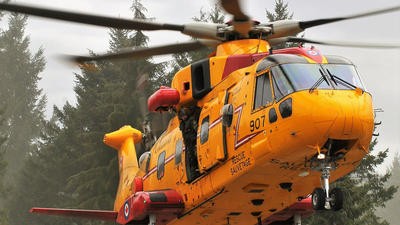Interview: Robert Atac
Leading the transformation: Mandy Langfield spoke to Robert Atac, President of Astronautics, about the pace of change in the avionics industry, the scope of technology integration and what’s coming next
Congratulations on your new role with Astronautics. What are you most looking forward to?
To be working with the talented Astronautics team to design and manufacture integrated avionics and connectivity systems – to once again lead a company that offers full-package solutions to the aerospace market. Our secure AeroSync connectivity solutions are at the leading-edge of what is commercially available, offering real capabilities that didn’t exist for rotary-wing platforms until recently. For example, the ability for emergency medical service personnel to send and receive real-time patient data while en route from an accident scene to a trauma center.
Having been involved in the avionics industry for years, what are the most significant changes you’ve seen?
The increased certification costs due to design assurance level requirements have impacted avionics development, and now the military is adopting these requirements – in turn impacting the cost of military avionics.
‘Pushing the boundaries of technology’ is a key Astronautics attribute. What are your plans for ensuring this goal is achieved?
As a privately held company, we are willing to fund internal research and development projects when we can offer innovative products to solve our customers’ toughest challenges. AeroSync, our family of secure connectivity solutions, is an excellent example in that it offers capabilities previously unavailable, both as line-fit and retrofit solutions. Our RoadRunner electronic flight instrument is designed to be an easy replacement for electromechanical primary flight instruments, combining two separate instruments into one unit – then provisioning it for enhanced capabilities like synthetic vision, providing a cost-effective and modular way to upgrade to glass.
Increasing pilot safety means doing the same for crew and aircraft. What are the next steps for safety enhancement through better use of avionics solutions?
Avionics solutions that enhance situational awareness for pilots and crew will continue to be important for safety: synthetic vision systems, terrain avoidance and warning systems are obvious examples. In addition, secure connectivity solutions bring realtime weather data to the cockpit, along with engine life-cycle data. The ability to automatically download helicopter parameters allows original equipment manufacturers (OEMs) and operators to watch for trends and exceedances that may not have been previously noted.
The ability to automatically download helicopter parameters allows OEMs and operators to watch for trends and exceedances that may not have been previously noted.
FAA certification is a major obstacle to getting products to market. How difficult is this process, and can it be improved?
Complex software and hardware solutions have a high bar to meet in order to be certified. Perhaps we are placing higher than necessary design assurance levels (DAL) for these solutions and need to be more realistic.

We’ve covered supply chain problems a lot in recent months; are you seeing any issues that are affecting the company’s operations and logistics?
Every day, and so is everyone else in the aerospace industry. Not only are we dealing with supply chain issues, but also in finding the right people as a resource. We need to be innovative and creative in our efforts, including securing multi-sourced suppliers, both for material and people. We are fortunate that the technology of the solutions we design for tier-one OEMs and retrofit programs has an innate appeal for aerospace professionals.
It is always easier to grow talent, than acquire it
Innovation and a willingness to be open to new ideas means companies can be on the cutting edge of engineering design and production, How does Astronautics ensure that it is up to date with technological developments and attracting new talent?
Staying ahead of the curve with technology and talent requires good strategic planning, product road mapping, benchmarking against the rest of the industry, and growing talent with robust internship and co-op programs. Astronautics has developed strong relationships with multiple colleges and universities, and these are our single greatest source of talent acquisition. On-the- job training also needs to be a priority. It is always easier to grow talent, than acquire it.

March 2023
Issue
In the March 2023 issue
When presented with wire strikes, what the risks, training and equipment you need; when carrying a load on the hoist, what are the dangers that come with the job; blood, blood products and organs require delicate and deliberate storage and handling; what are the considerations for global management of sovereign firefighting fleets; and how do they approach HEMS and SAR in Aotearoa; plus a whole lot more to keep you informed and good to go!
Mandy Langfield
Mandy Langfield is Director of Publishing for Voyageur Publishing & Events. She was Editor of AirMed&Rescue from December 2017 until April 2021. Her favourite helicopter is the Chinook, having grown up near an RAF training ground!




